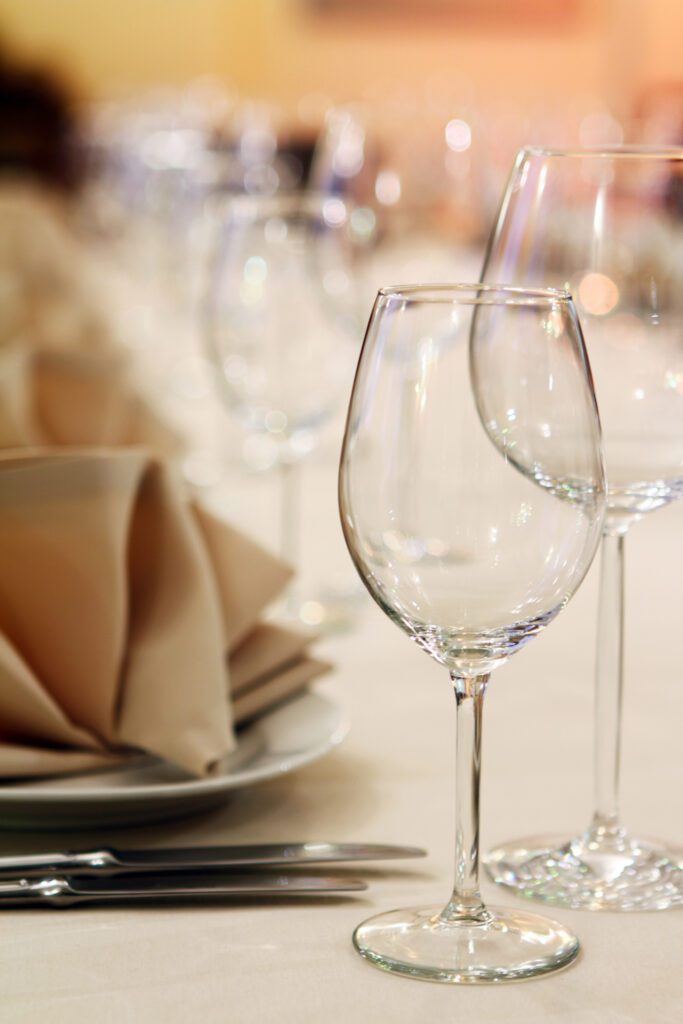Viticulture, Wine, Wine Pairing
Wine Etiquette Tips
The world of wine isn’t quite as stuffy as many imagine it to be, but it’s always helpful to know the basics of wine etiquette. A few easy tips can make you feel more comfortable at wine tastings and other social events involving wine, and it also helps you get the most out of any wine-drinking experience. This is true of novices as well as more experienced wine enthusiasts, who should also understand that wine etiquette has evolved over time. The contemporary wine scene tends to be fairly relaxed and focused more on individual enjoyment than following the “rules.” With common sense and a respectful attitude, all are equally welcome in wineries, tasting rooms, wine bars, and everywhere else that wine is served.
Brush Up on Some Wine Terms
No matter your entry point to learning about wine, whether it’s picking out a bottle at the store or planning a weekend in wine country, it’s helpful to learn some basic wine terminology. Doing so is an essential first step to asking questions, chatting about wine, and learning what characteristics you like and dislike. There’s a lot to know about wine, and even experts are constantly learning new things. Here are a few key things to know for beginners:
Know the four defining characteristics of wine
Four defining elements of every wine are variety, meaning the type of grape; the region where those grapes are grown; the vintage, meaning the year of harvesting, and the producer, another name for the winemakers or brand.
Know your reds from your whites
Try to remember the names of some major red and white wine varieties. Even this basic knowledge will help you feel more confident in discussing wine. Among the most popular red wines are Cabernet Sauvignon, Merlot, Pinot Noir, Syrah, and Zinfandel. Widely produced white wines include Chardonnay, Pinot Grigio, Sauvignon Blanc, and Riesling.
Understand some tasting lingo
Some of the terms often used to describe a wine include sweet or dry (the opposite of sweet); body, which refers to the heaviness of the wine; and earthy, nutty, or oaky, referring to particular flavors imparted in the wine by the earth or barrel. The nose of a wine simply means its aroma. The terroir is the soil and other natural conditions of the grapes’ growing environment. Legs refers to the streaks of wine that drip down the glass after swirling. Wines are often compared to various fruits to help describe their unique flavor profiles.
Match the Wine to the Glass
One of the simplest elements of wine etiquette involves matching the type of wine to the right style of glass. This isn’t just a matter of being fussy – there’s science behind the designs of different wine glasses. That said, this “rule” has some flexibility. If you’re hosting a casual party or dinner and only have one type of wine glass, you don’t necessarily need to rush out and buy new glassware. However, if you’re serious about getting into wine, consider having distinct red wine and white wine glasses, which need not be expensive.
If you’re looking at a selection of wine glasses, generally speaking, the narrower, shorter, tulip-shaped glasses are for white wine. The wider-bottomed, larger glasses are for red wines. Always try to hold the glass by the stem or base, and fill wine glasses less than halfway. Serve approximately equal portions to everyone, unless they request otherwise.
Keep an Open Mind
A lot of experienced wine drinkers and some beginners come to a tasting experience with fixed ideas about what they like and don’t like. We all have personal preferences, but it’s a good idea – and good wine etiquette – to keep an open mind. It’s easy to get in a rut with long-time favorites, but sticking with only certain wines limits your experiences. Plus, every bottle of wine is unique! You might discover you dislike all Chardonnays except those from a certain new winemaker. Or perhaps you used to hate all red wines 20 years ago, but your tastebuds have changed over time. It’s always worth trying a sip or two.
Another element of keeping an open mind is to realize that most of the old-fashioned “rules” about wine are either not rules at all, or at least they are flexible. For example, it’s a common belief that all red wines should be served at room temperature, and all white wines should be chilled. This isn’t always true – there are numerous exceptions. The same applies to the idea of pairing red wines with red meats and whites with white meats. Don’t put these kinds of limits on your wine drinking experiences.
Etiquette at a Wine-Tasting
When you’re tasting wines at home, anything goes! But going to a tasting at a winery or tasting room presents a different atmosphere, which can be unfamiliar to novices. On a wine-tasting trip, there are certain etiquette tips to know that will help you feel comfortable and also make sure you’re getting the most out of every sip.
Plan ahead
It’s always a good idea to make a reservation at a tasting room, especially if you want to go on the weekend or have a larger group. Check individual wineries’ pet and child policies, if applicable. Understand that tasting rooms are not bars, and wine-tasting is a daytime activity. Be prepared to call it a day if you get too tipsy! And of course, have a designated driver or transport arrangements.
Charging fees for tastings is standard, with considerable price variation. If you’re on a budget, look up the prices before making a reservation. Some wineries will waive tasting fees if you buy a bottle.
Taste slowly and mindfully
Tasting a new-to-you wine is different from drinking a glass of your favorite wine at home or in a restaurant or bar. The tasting is intended to help you discover new wines that you might love enough to buy, and for novices to figure out their personal preferences. So, drink slowly and mindfully, using all your senses. Look at the wine to assess its color and clarity; swirl the glass gently to help release the wine’s aromas, and stick your nose right in there to smell the wine. Then, take a decent-sized sip, and optionally swish the wine around in your mouth a little.
Don’t drink it if you don’t like it
If you don’t like a wine after a sip or two, you aren’t obliged to drink it. You can ask for a spit bucket – they’re available for a reason – and pour out the rest of the glass. Or, tell your host it wasn’t to your tastes, and they will pour the rest out for you. Using the spit bucket is another way to moderate your alcohol consumption if you have multiple tastings planned in a day.
Communicate with your hosts
Your host, and everyone you encounter at a winery, are likely to be extremely knowledgeable about wine. At smaller, family-run wineries, there’s a good chance the person pouring your wine also had a hand in making it. Take full advantage of their knowledge, and don’t be afraid to ask lots of questions and offer (polite) feedback as you discover your preferences.
Put these tips into practice when you visit our winery.



